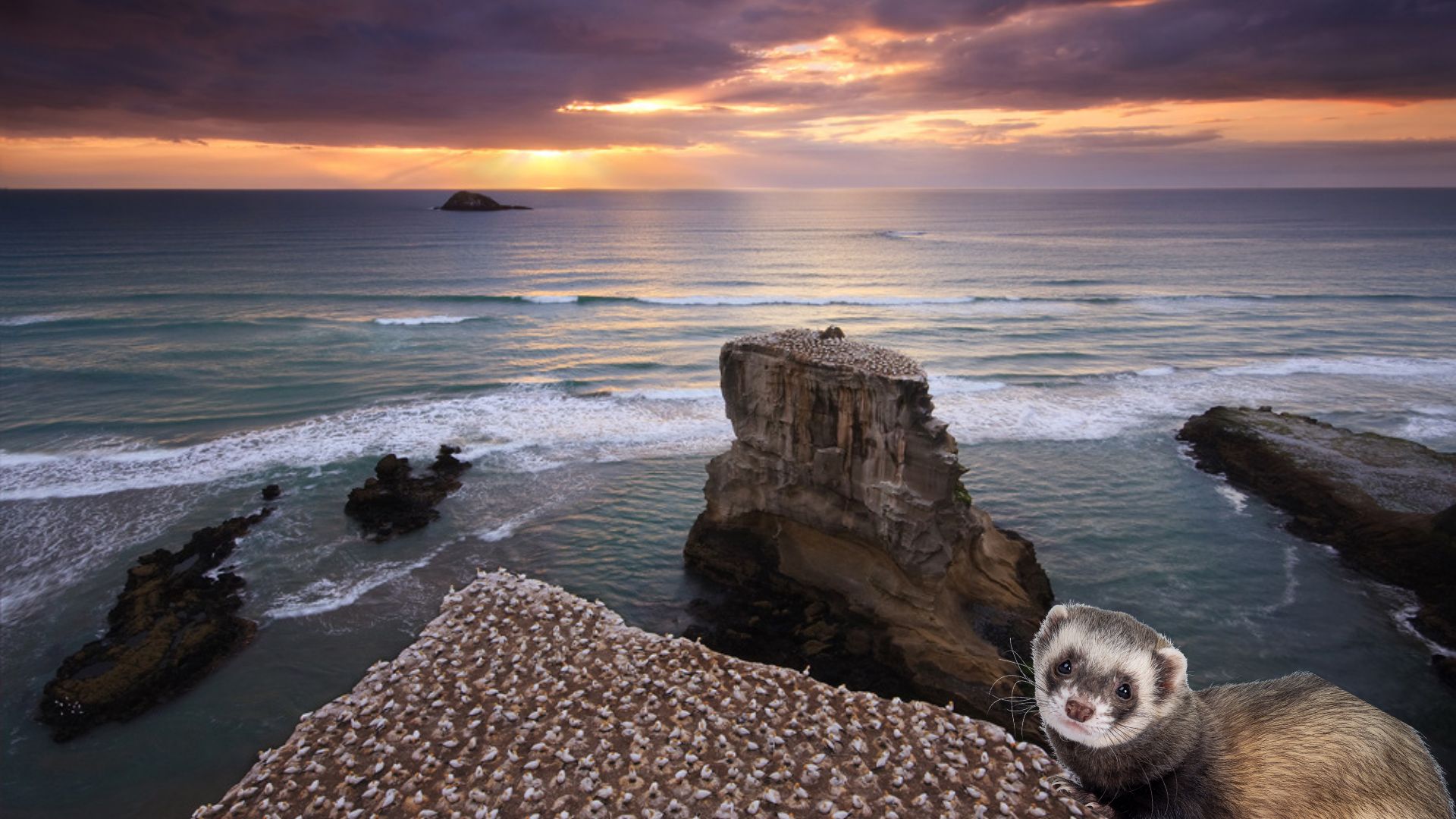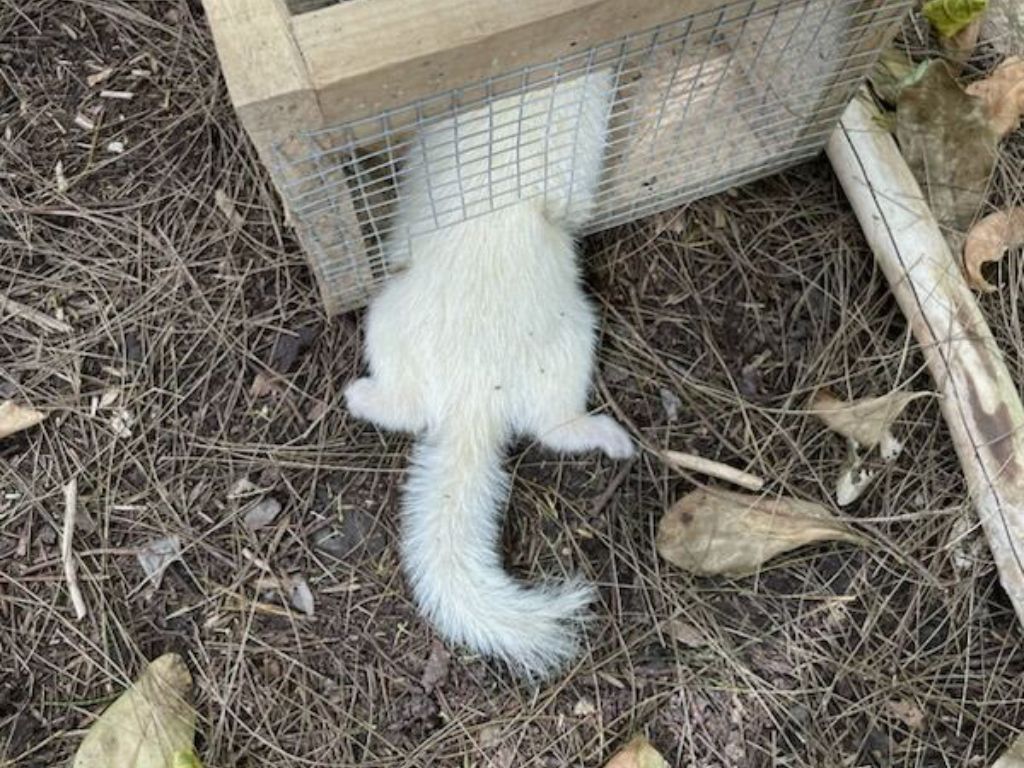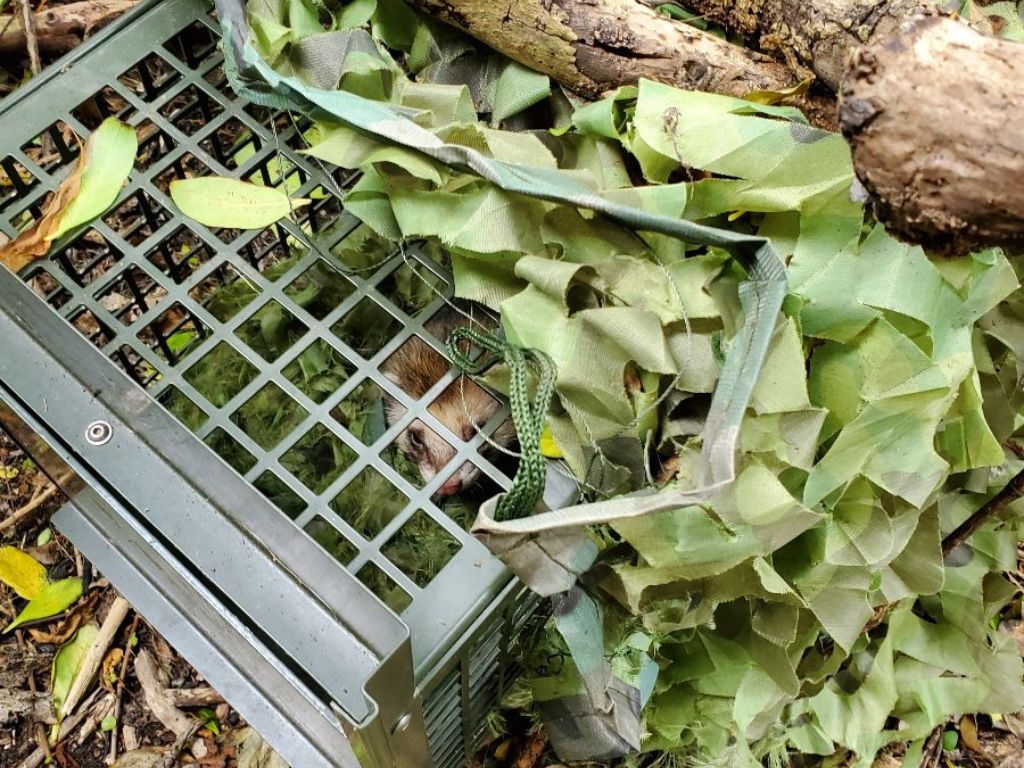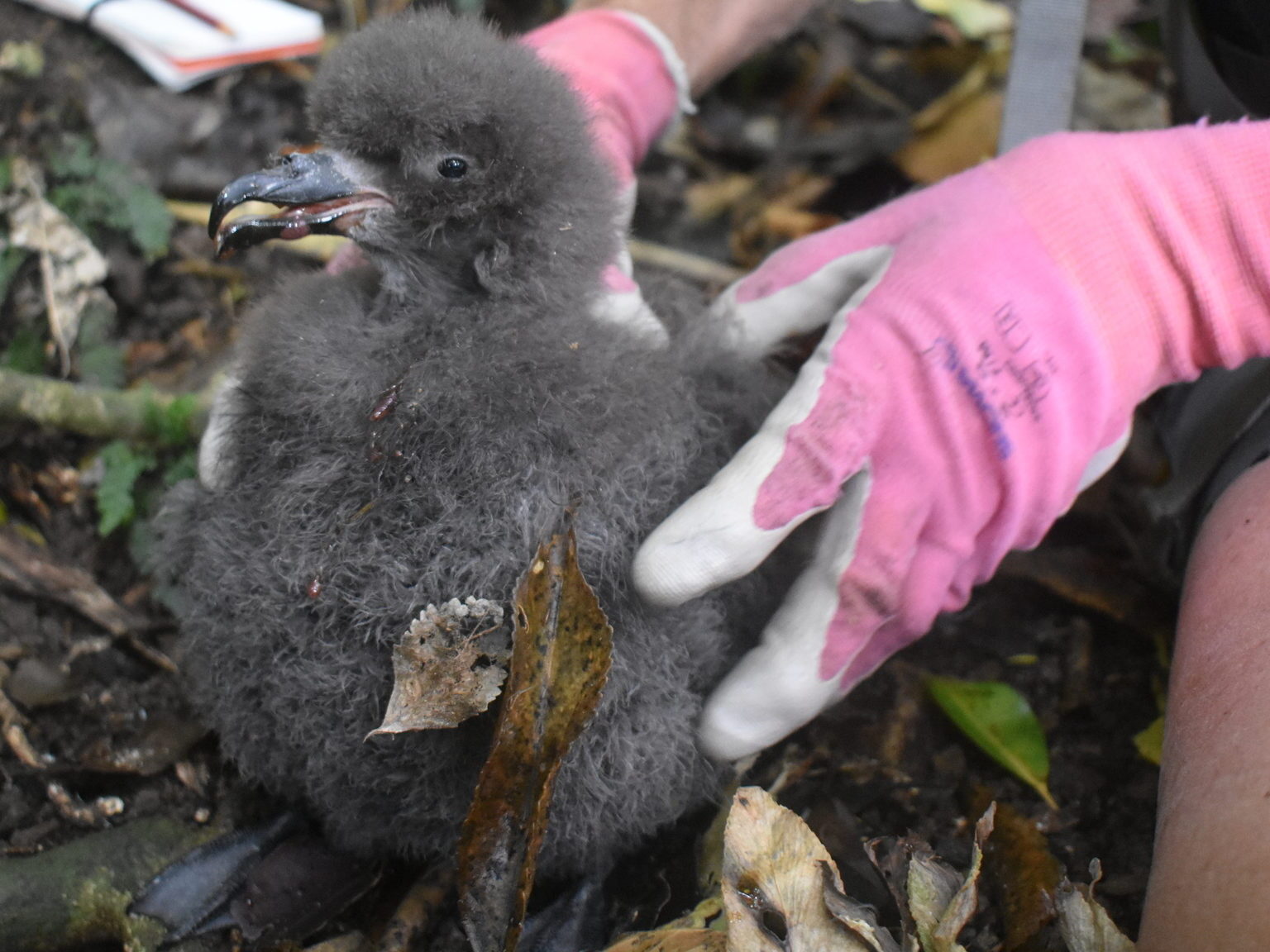A ferret sniffing around petrel burrows and a gannet colony on the west coast of Auckland ignited a race against time to protect the seabirds.

The local volunteers sprang into action, successfully intercepting the intruder before it could wipe out nests and chicks on the Muriwai Peninsula.
Auckland Council volunteer trapper Michael Lawry was the first to spot the ferret on trail camera footage.
“At first, I thought it was a quickly moving dachshund. When it appeared again on a different trail camera going into petrel burrows, it was clearly a ferret. We haven’t had ferrets on the coast for ten years, so I wasn’t sure how to catch it quickly,” he says.
The inland predator control groups are supported by the Muriwai Environmental Action Community Trust (MEACT) to catch them before they get close to the nesting coastal birds. Ten ferrets were caught in Muriwai throughout 2023.
Michael called MEACT right away to ask for advice.
By coincidence, Shona Oliver of Predator Free Muriwai caught a pure white female that day using ferret roadkill as a lure. Facing the situation’s urgency, she drove it to the Muriwai coast.
With the fresh ferret in hand and valuable advice from PF Muriwai, Michael strategically left scent trails leading to a live trap, inside which he placed the ferret as bait.

He chose a live trap instead of a DOC 250 to fit the rather large ferret bait and make sure her scent could be smelled as widely as possible.
“We caught it that night.”

“It could have been devastating. The whole ōi (grey-faced petrel) colony could have been wiped out by this ferret.
“It was a really great community response, I asked for help and got it. We got a bit lucky, and we ended up catching the ferret quickly,” Michael says.
Despite the timely intervention, at least three ōi chicks fell victim to the ferret, found dragged out of their burrows.
“That’s just what we know of. We volunteers don’t go into the burrows; you need a special DOC permit for handling the birds, so we don’t know how many were actually killed by the ferret.”
A rough year on the coast
It comes off the back of a tricky year for the birds on the Muriwai coast.
Feral and domestic cats had been killing adults and chicks, and a trap-shy stoat had been running around the nesting birds, though mainly catching rabbits.
Auckland Council reckons there are 50 nesting pairs of ōi on the headlands (in addition to the 1,200 pairs of gannets nearby). The previous year, there was a 70% survival rate for monitored ōi chicks, and the 2023 breeding year looks similarly promising.
Micheal says the monitoring cameras, put in place in 2015, are a blessing and a curse.
“The more cameras you have, the more you know about what’s happening. We see lovely scenes of ōi exercising their wings at night or parents coming in to feed their chicks. But we also see the extent of destruction caused by feral cats, domestic cats, hedgehogs, and this one resident stoat we just can’t catch.

“The tricky part is we only have cameras in some areas, so we can only react to what we see in those areas.”
He believed the 15 years of trapping work in Muriwai was doing a good job, but it was constant and unrelenting work.
“In the long-term, we need another mechanism or tool to save these birds, as we can’t be reactive trapping forever.
“One day, we [volunteers] hope we won’t be needed anymore.”
In the interim, the collaborative spirit among West Auckland groups remains a beacon of hope – and a reminder that no one is doing the mahi alone.
“We all know each other and catch up to swap information, for example, that ferrets make great lures for other ferrets.”

